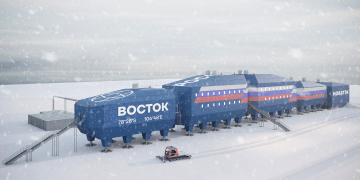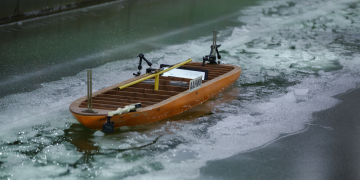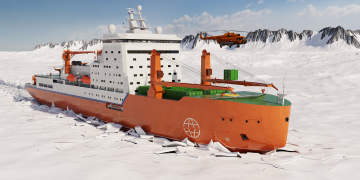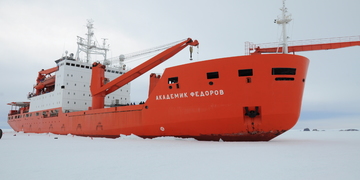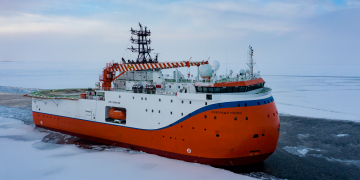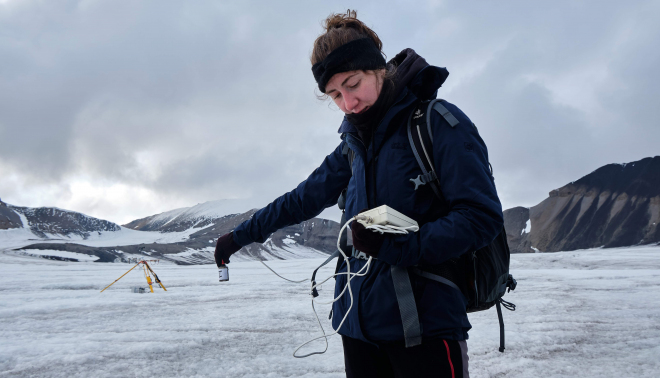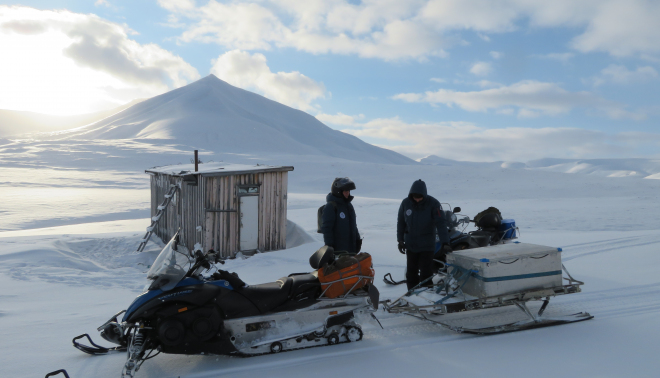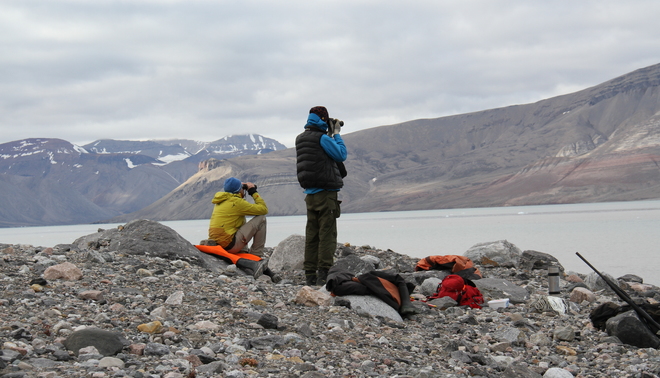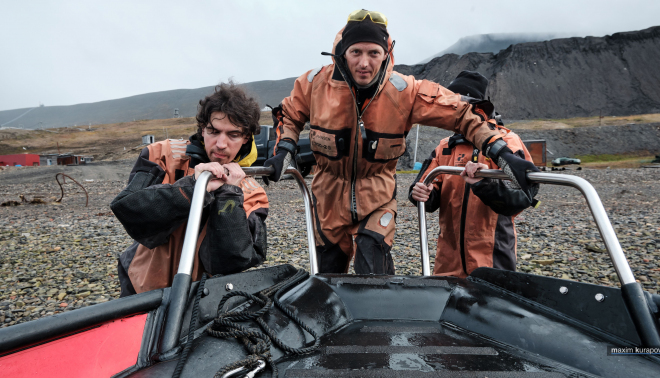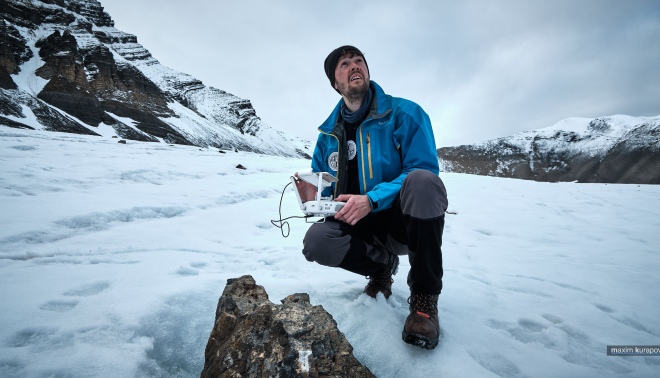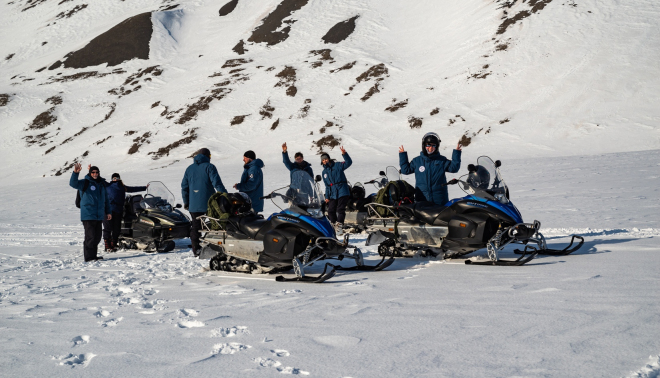Russian arctic scientific expedition on Spitsbergen (Slavbard)
Information
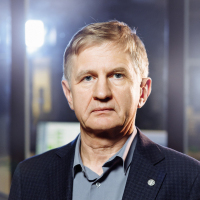
The geographical location of the Spitsbergen archipelago (Slavbard), its natural and climatic diversity and a relatively good transport accessibility make it a unique area for conducting high-latitude scientific research.
ACTIVITIES
RAE-S conducts both year-round and seasonal research, monitoring and observations on the archipelago. The main expedition and logistics base is located in Barentsburg and its surroundings. It includes two laboratory buildings, a garage and storage facilities, vehicles (cars, snowmobiles, small watercraft, ATVs), scientific field test sites (meteorological, oceanographic, geophysical, hydrological, cryospheric), measuring instruments and analytical equipment. Unique facilities are located there: the northernmost Russian chemical-analytical laboratory and the northernmost Russian receiving station - a remote point for receiving and transmitting satellite information (RPRTI).
The RAE-SP program includes studies of glaciers, the distribution and dynamics of permafrost, oceanographic processes in the waters of the Spitsbergen fjords, monitoring of the hydrological regime of rivers and lakes, geophysical and meteorological studies.
The works on Spitsbergen are performed by the RAE-S wintering (year-round) staff (10-12 people) and members of the annual seasonal expedition (up to 40 people).
YEAR-ROUND MONITORING AND OBSERVATIONS
RAE-S wintering staff performs regular monitoring and observations of the aerosols content, their physical and chemical characteristics in the surface air, the processes of heat and energy exchange between the underlying surface and the atmosphere, the content of gaseous impurities by means of two stations for the atmospheric air quality monitoring, as well as receives and processes and transmits satellite hydrometeorological information to the AARI and carries out constant geophysical monitoring.
At the cryosphere field test site, the permafrost parameters are monitored: the depth of the seasonally thawed layer at the site (organized according to the International Program for Circumpolar Active Layer Monitoring (CALM)), and the temperature in specially equipped thermometric wells, allowing to estimate the permafrost degradation rate in Spitsbergen.
SEASONAL WORKS
Seasonal field works on the Spitsbergen island are performed annually from March to October. They include monitoring of the land water bodies and their hydrological cycle, studying of the elements of the water balance of river catchments in the Grønfjord Bay basin, monitoring of the state and dynamics of waters in inland marine areas. At the Spitsbergen glaciers, observations of the mass balance and movement of glaciers are made, as well as the study of their internal structure, microclimatic features and surface heat balance, and the effect of pollution on the rate of their evolution. Unique studies of bulgunnyakhs (heaving mounds - a special form of permafrost relief) are carried out in the valleys of the Gren and Hollendar rivers using drilling, GPR, electrical prospecting, and chemical analysis of soil and ice. The formation and development of the bulgunnyakhs is directly related to fluctuations in sea level at the archipelago and is of great scientific interest.
Paleogeographical research is being developed, the goal of which is to reconstruct the landscapes and climate changes of the last millennia.
CHEMICAL ANALYTICAL LABORATORY
The chemical-analytical laboratory of RAE-S is equipped with the most up-to-date equipment, which is used by scientists of various specializations. Analyses of samples and probes of snow, water, air, soil, frozen soil, bottom sediments, plants and various marine organisms are carried out in order to assess the content of mineral and organic substances, and to determine the level of contamination with hazardous substances. The accumulation of heavy metals and mercury in marine organisms of the fjord ecosystem, the chemical composition of cryoconites are being studied, and pioneering work is being carried out to determine the content of perfluorinated acids in various environments. Colleagues from the North-Western Branch of ‘Research and Production Association “Typhoon “” use the laboratory to analyze the content of various pollutants in the natural environment of the archipelago as part of continuous environmental monitoring. In 2017–2019, the laboratory became the basis for annual one-week practical course for students at the University Center in Spitsbergen (Norway).
The advantageous geographical location of the APPI antenna makes it possible to receive hydrometeorological information online across almost the entire Arctic. After the necessary processing, it is transferred to the AARI, where it is widely used for scientific and forecasting purposes, including ensuring navigation along the Northern Sea Route.
RSCS
In addition to carrying out the scientific program of the AARI in Spitsbergen, the tasks of the RAE-S include coordination and logistical support for the scientific research of the AARI partners in the “Russian Scientific Center on Spitsbergen” (RSCS). The consortium includes 13 organizations of the Ministry of Natural Resources and the Ministry of Education and Science. AARI serves as the Russian Research Center activities organizer and coordinator.

RAE-SP carries out year-round research on the archipelago, and in addition performs a lot of organizational work in the interests of the entire RSCS. It is responsible for the preparation and coordination of the annual “Interdepartmental program of scientific research and observations on the Spitsbergen archipelago” and reports on its implementation, provides information support for the activities of the RSCS, communicates with Russian and international scientific organizations, presents RSCS at international scientific platforms, particularly, at the Spitsbergen Scientific Forum (SSF), communicates with the Governor of Spitsbergen (Svalbard) regarding Russian scientific activities.
The educational part plays an increasingly important role in RAE-S. Field practices and summer schools are held annually for Russian and foreign students. In 2018–2019, the winners of the scientific and creative project competition 66°33’ performed their works at the archipelago.
International cooperation is an integral part of living and working in Spitsbergen (Svalbard). Scientific projects together with Norwegian, German, and Polish colleagues are carried out in the field of permafrost science, oceanology, hydrology, climate research, and environmental pollution.
PHOTOS
| By Ksenia Poleshchuk, Vladimir Borodkin, Nikita Demidov, Maxim Kurapov |
MAP
| AARI Archives |
STATIONS
-
Russian scientific center on the Spitsbergen archipelago
